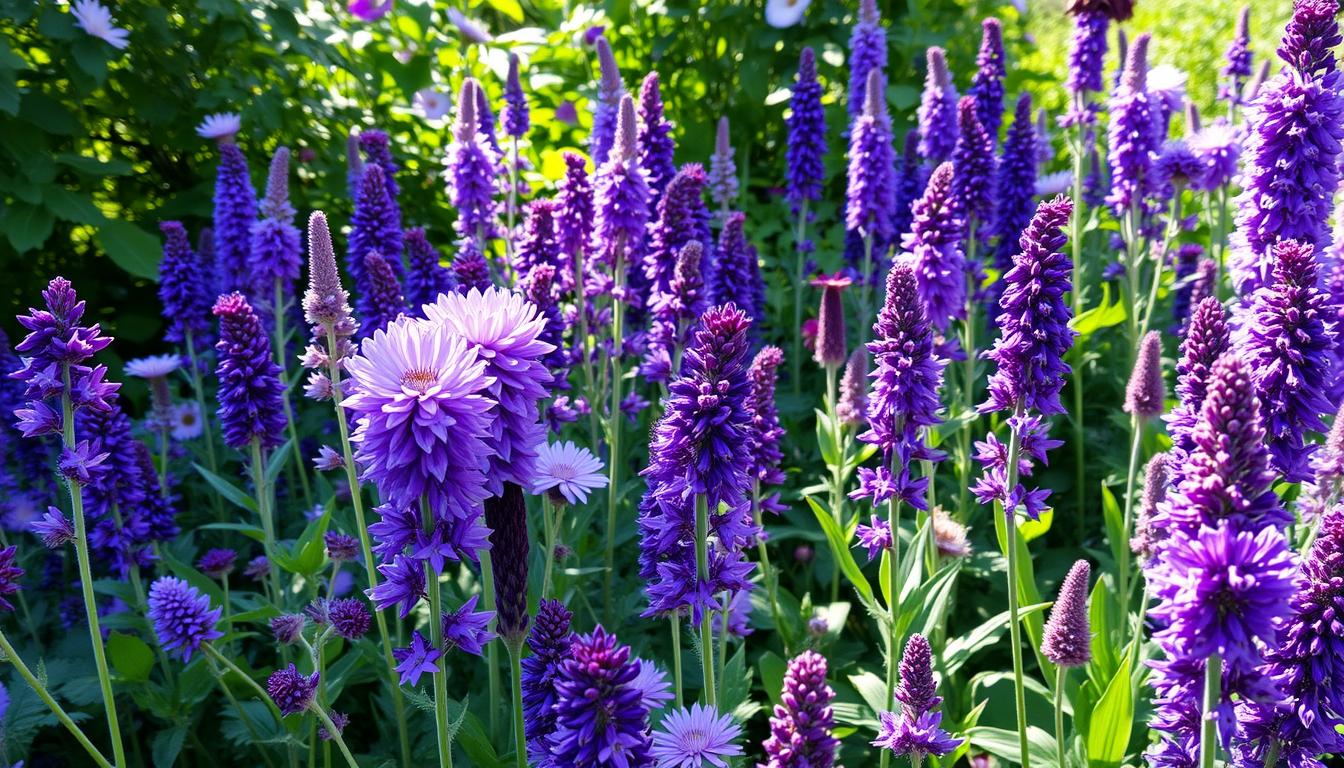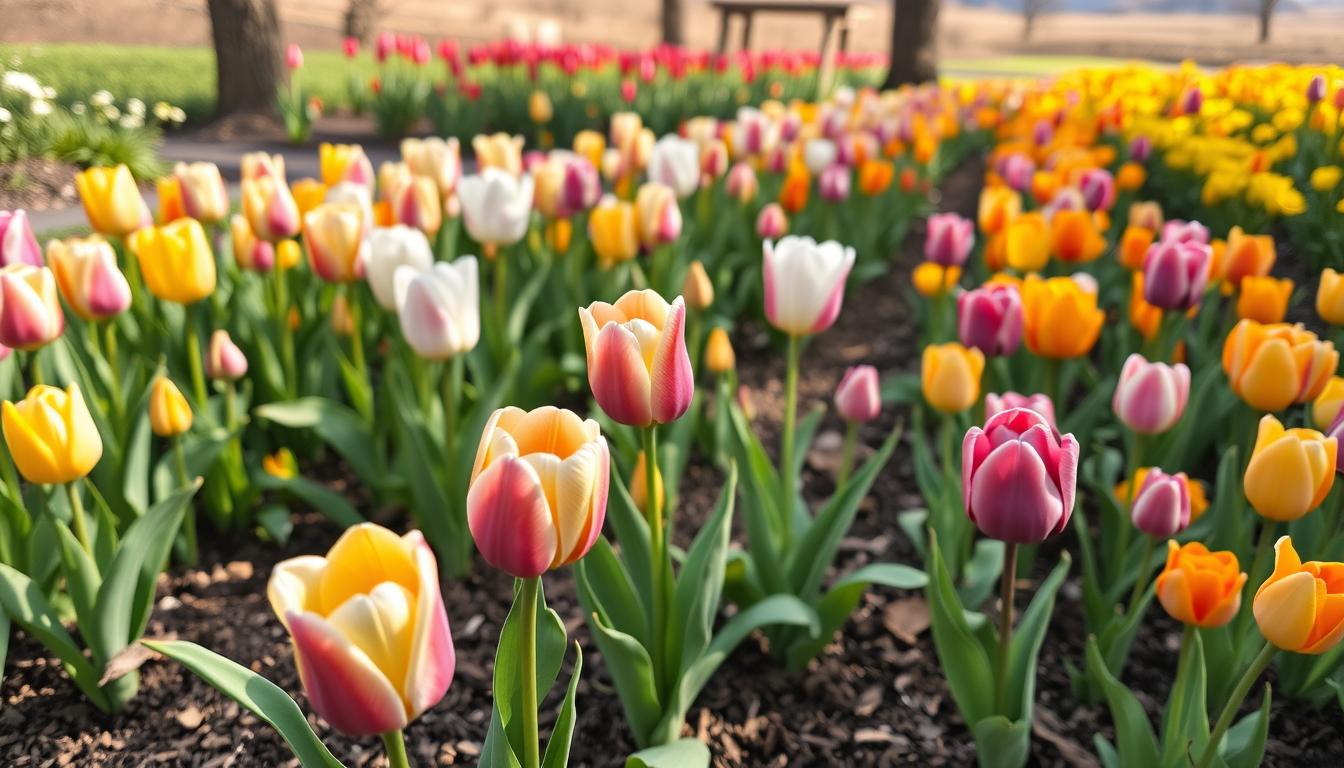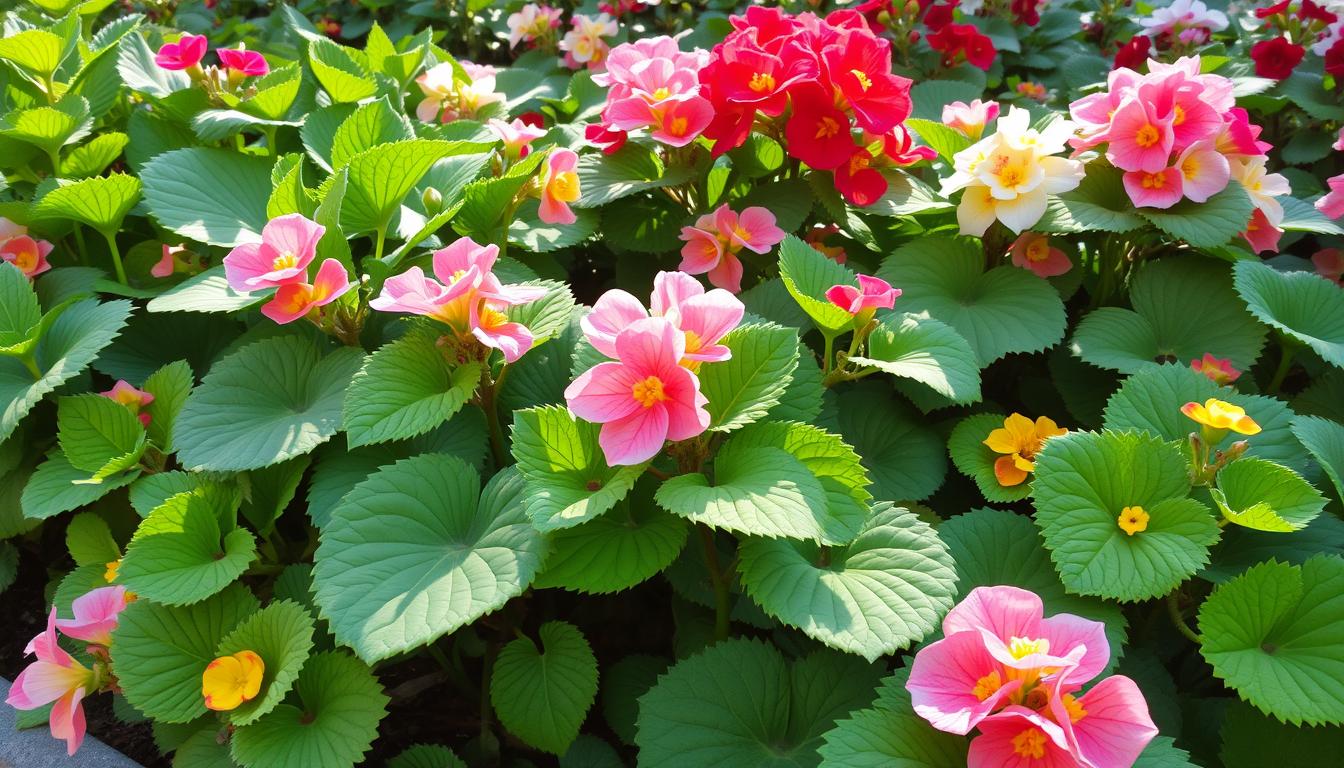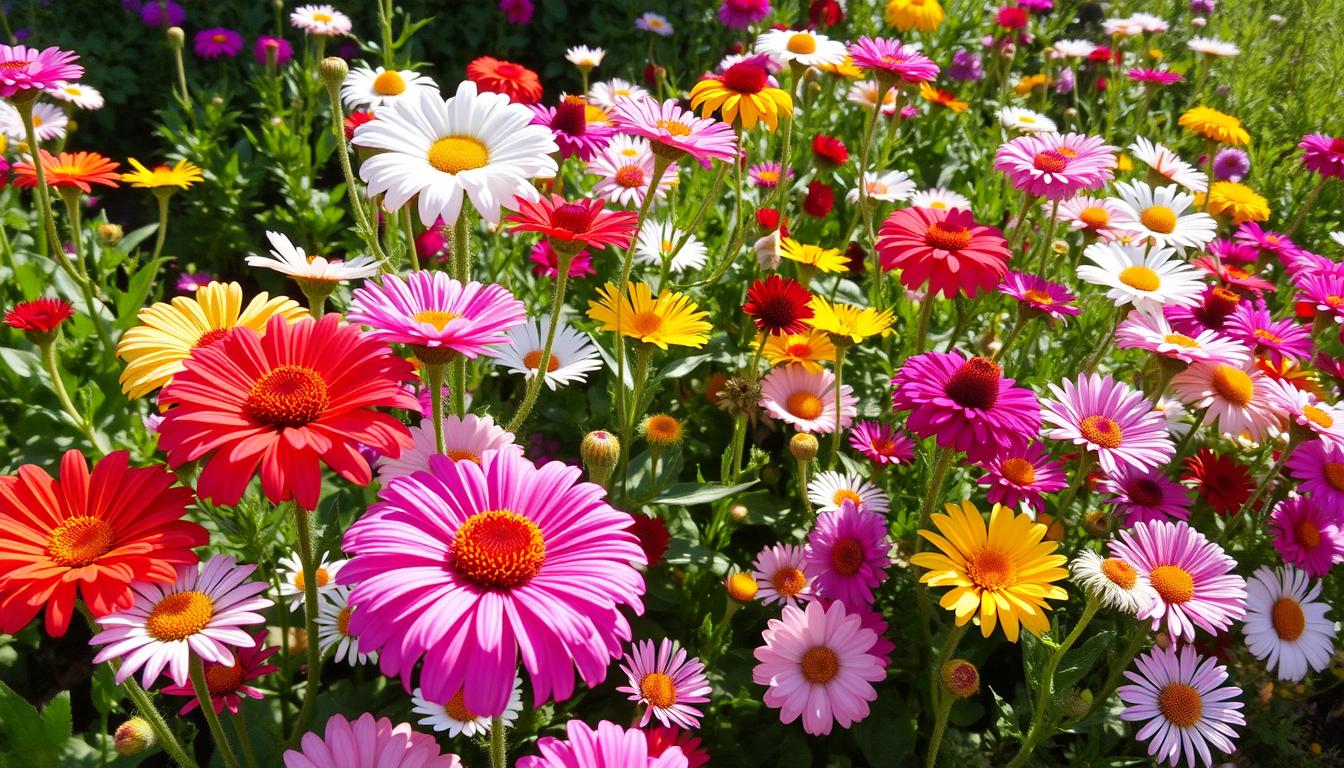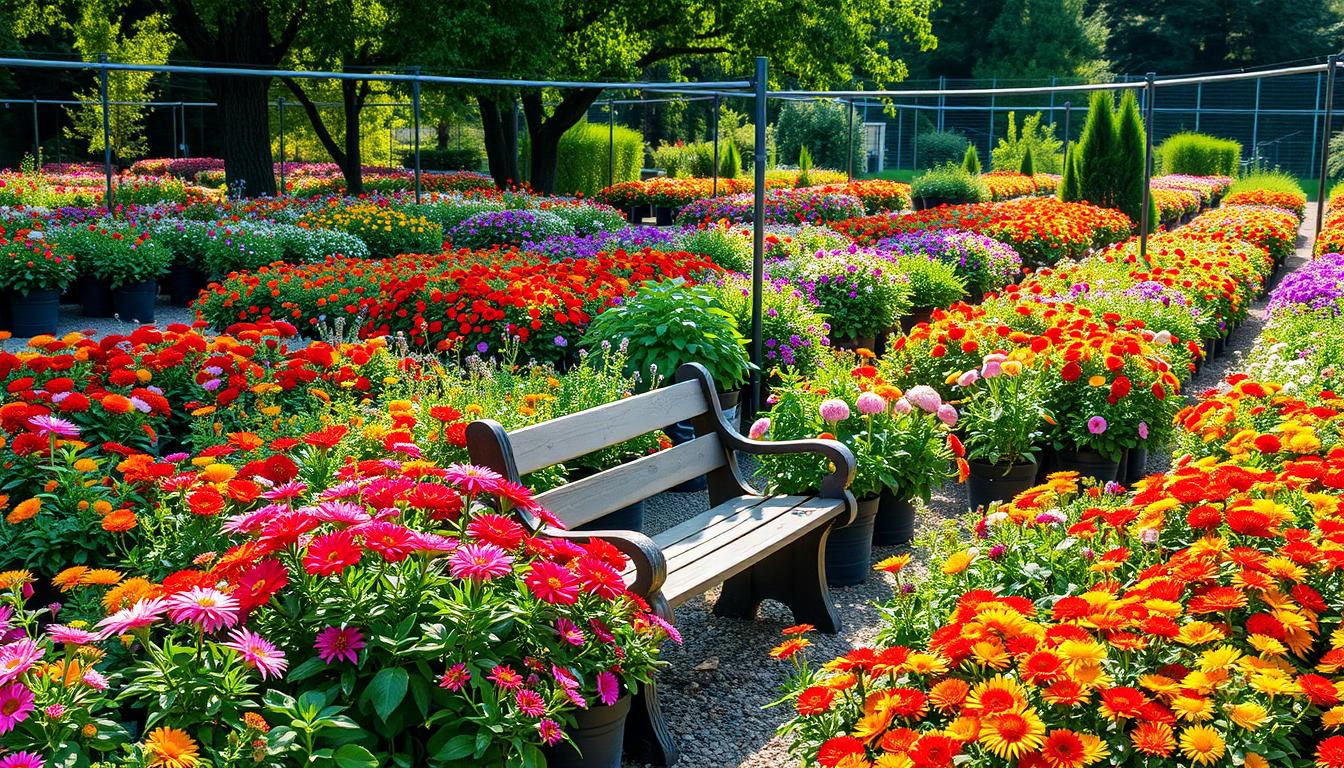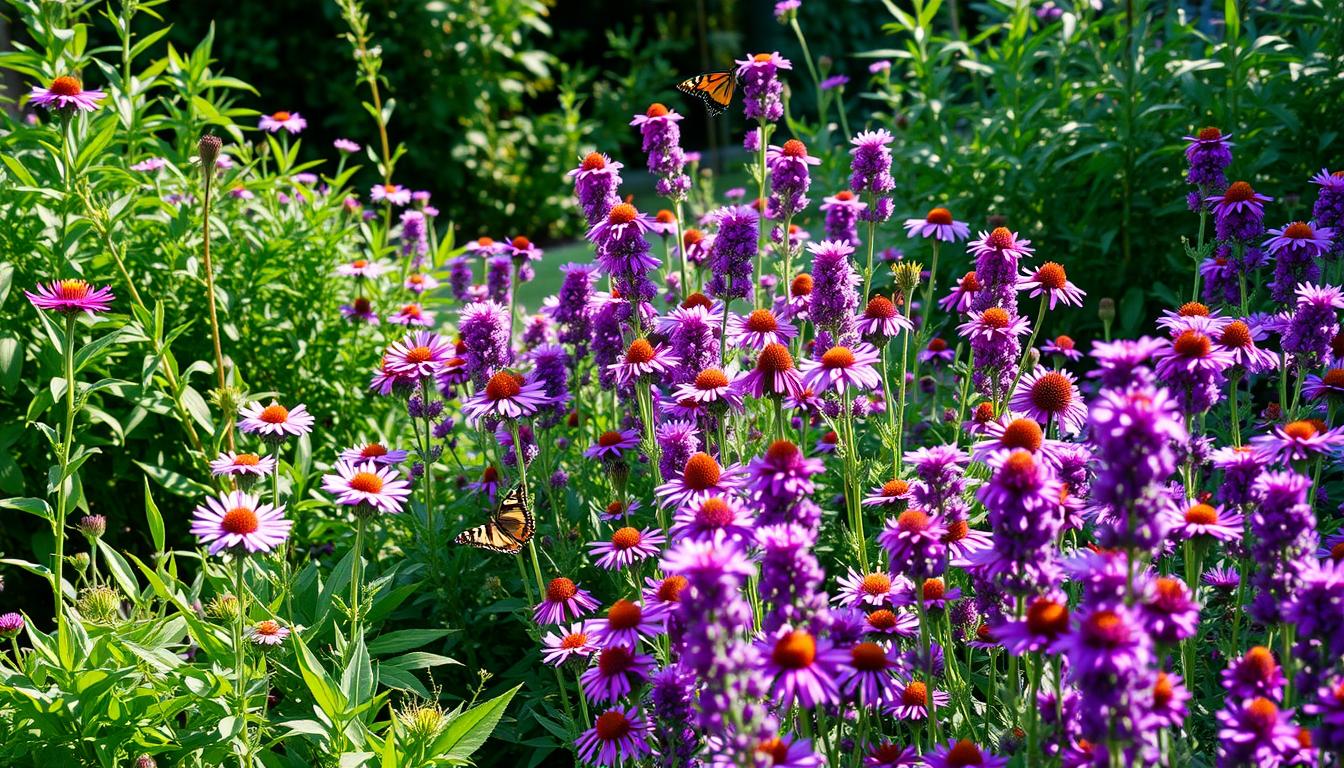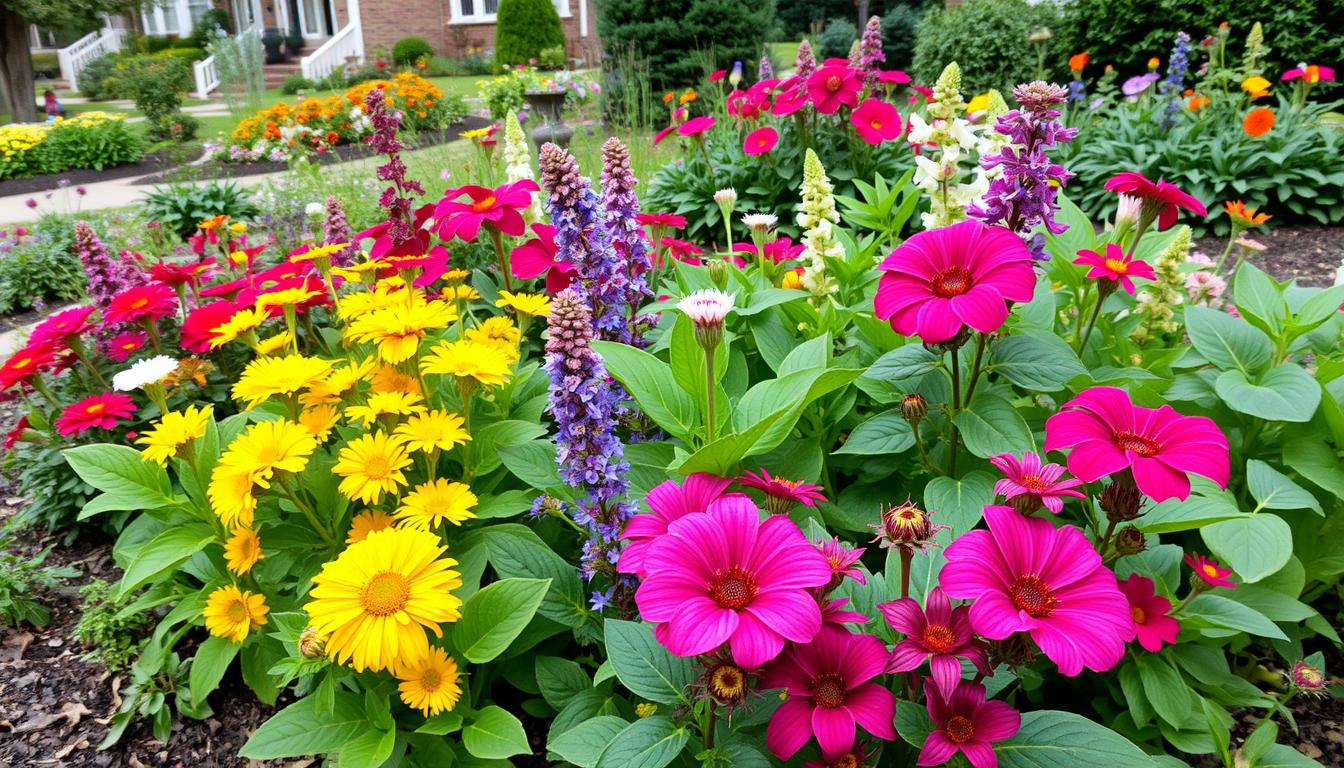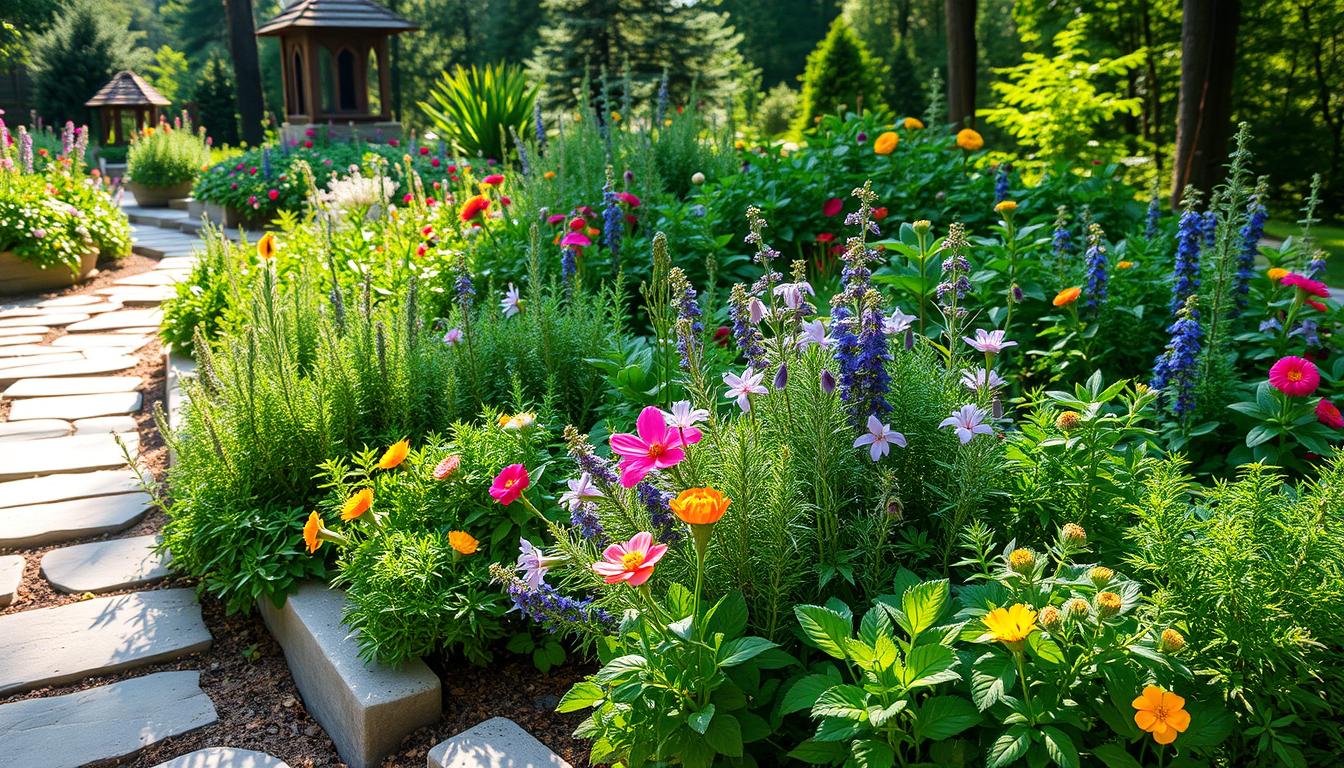Growing up in my grandmother’s herb garden, curly parsley was more than just a garnish. It was a vibrant green companion that sparked my culinary curiosity. Every summer, I watched her carefully tend to these delicate, frilly leaves. They seemed to dance in the sunlight, turning simple dishes into works of art.
Curly parsley is a versatile herb that can elevate your gardening and cooking experience. Whether you’re a home gardener or a cooking enthusiast, understanding its potential can open a world of flavor and nutrition. With only 21 kcal and full of vitamins A and C, curly parsley is more than just a pretty garnish.
This biennial plant offers gardeners a chance to grow a stunning and useful herb. You can directly seed curly parsley in your garden, planting 4 to 6 plants per square foot. Its adaptability means you can enjoy fresh curly parsley in mild winter climates all year, making it a great addition to any herb garden.
Ready to discover the magic of curly parsley? Let’s explore its uses, growing techniques, and culinary potential. It can transform your garden and kitchen.
Table of Contents
What is Curly Parsley and Its Benefits?
Curly parsley is a versatile herb that adds both beauty and nutrition to your cooking. It’s part of the Petroselinum crispum family and has tightly curled leaves. Its unique texture and bright green color make it a favorite among chefs and home cooks.
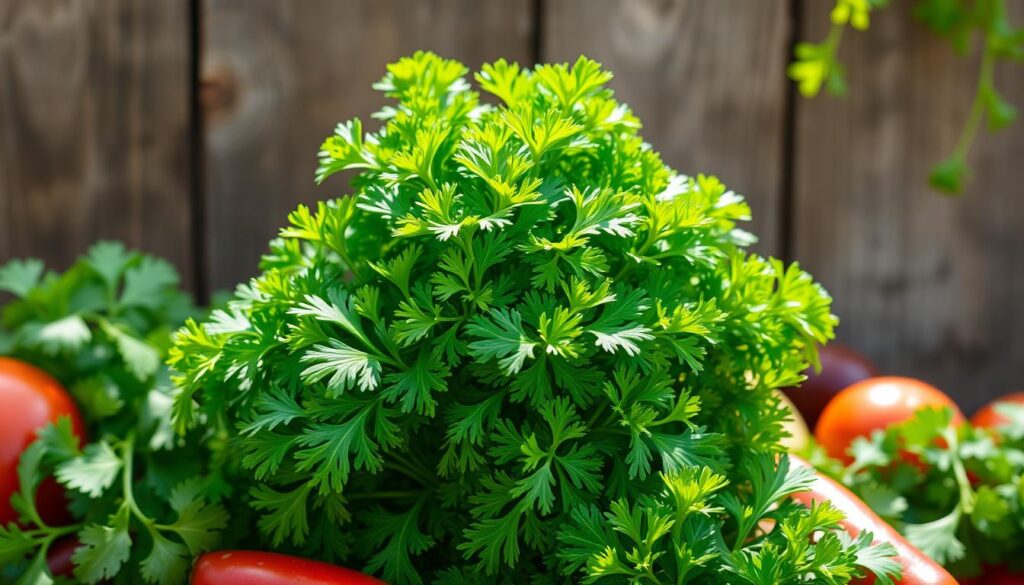
Nutritional Powerhouse
Curly parsley is a nutritional powerhouse. It’s packed with vitamins and minerals that boost your health. It’s especially rich in vitamins A and C, iron, and antioxidants.
| Nutrient | Amount per 100g |
|---|---|
| Vitamin A | 6196 IU |
| Vitamin C | 133 mg |
| Iron | 6.2 mg |
Culinary Applications
Curly parsley is not just nutritious; it’s also versatile in cooking. You can keep it fresh for up to 3 days in the fridge or a week in water. It has a milder taste than Italian parsley but is great for garnishing and adding beauty to dishes.
Health Benefits of Curly Parsley
The health benefits of curly parsley are significant. Here are some key advantages:
- Supports immune system function
- Provides powerful antioxidants
- Aids in digestion
- Helps reduce inflammation
“Small but mighty, curly parsley is a nutrition-packed herb that can transform your meals and support your health.”
Pro tip: To maximize curly parsley benefits, add it fresh to your dishes for the most potent nutritional impact.
Growing Curly Parsley in Your Garden
Growing curly parsley can be very rewarding. This herb needs the right conditions to grow well. Knowing how to grow it will make your herb garden lush and productive.
Ideal Growing Conditions
Choosing the right spot for curly parsley is key. It likes well-draining soil and does best in sun to partial shade. Make sure your garden bed has fresh compost for nutrients.
- Sow seeds 1/2 inch deep in the garden
- Space seeds about 6 inches apart
- Keep the soil moist while seeds germinate
Planting and Germination Tips
Germinating parsley seeds can take three to four weeks. Be patient. Once they sprout, thin them to 8-12 inches apart for better growth.
| Growing Parameter | Recommendation |
|---|---|
| Plants per Square Foot | 1-2 plants |
| Plant Height | 6-18 inches |
| Sunlight Requirement | Full sun to partial shade |
Season and Climate Considerations
Curly parsley grows well in many climates. In cooler areas, it grows for two years before seeding. It can handle light frost and prefers moderate temperatures.
Pro tip: Regular harvesting encourages continuous growth and prevents the plant from bolting in hot conditions.
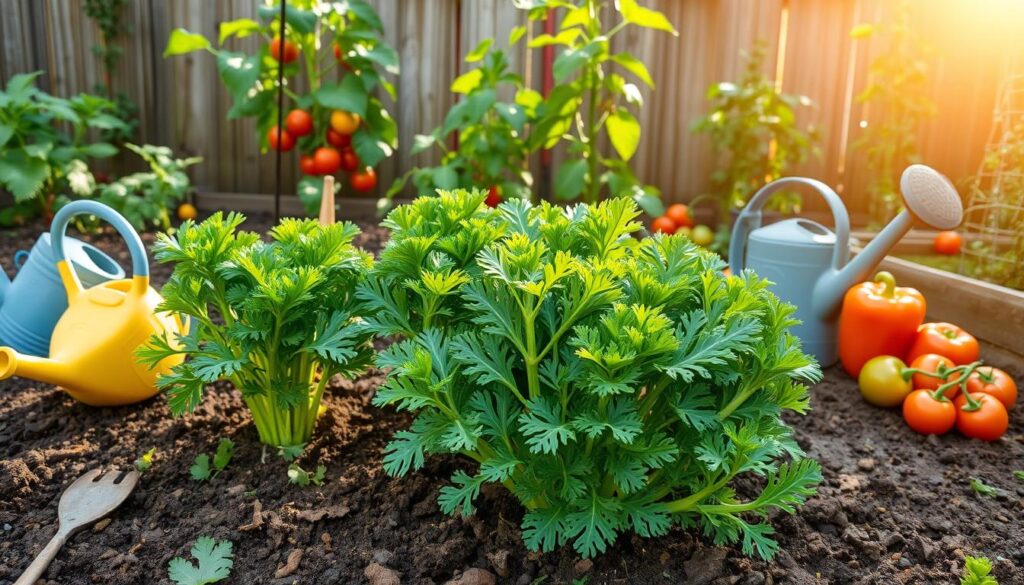
Follow these tips for a healthy herb garden. Keep an eye on your plants, ensure they get enough water, and enjoy the fresh taste of homegrown parsley.
Harvesting Curly Parsley
Growing curly parsley in your garden is exciting. It’s all about knowing how to harvest it right. From seed to harvest, it’s a journey that brings you fresh, tasty herbs.
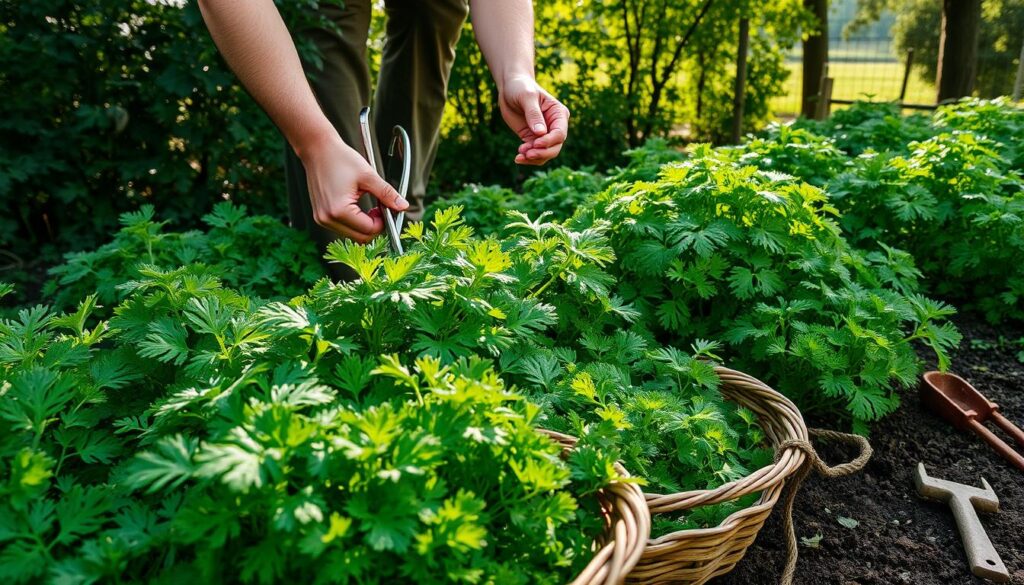
Optimal Harvest Timing
Harvesting curly parsley at the right time is key. It usually takes 70 to 100 days after sowing to reach full maturity. The best time to pick is early morning. This is when the leaves have the most flavor.
Curly Parsley Care Tips for Harvesting
- Wait until plants are at least 6 inches tall
- Harvest only one-third of the plant at a time to prevent stress
- Cut entire stems at the base for optimal growth
Storage and Preservation
After you harvest your curly parsley, storing it right is important. You can keep it fresh in the fridge for 7-10 days. Just place the stems in a glass of water. For longer storage, try these methods:
| Preservation Method | Storage Duration |
|---|---|
| Freezing | Up to 1 year |
| Drying | 2-3 years |
“Regular harvesting encourages new growth and keeps your parsley plant healthy and productive.”
By following these tips, you’ll have a rich harvest of curly parsley all season long.
Cooking with Curly Parsley
Curly parsley is a highly adaptable herb that enhances the flavor of your dishes with its fresh, mild taste. Beyond its flavor, it also serves as an attractive garnish, making it an excellent choice for adding both taste and visual appeal to a variety of recipes.
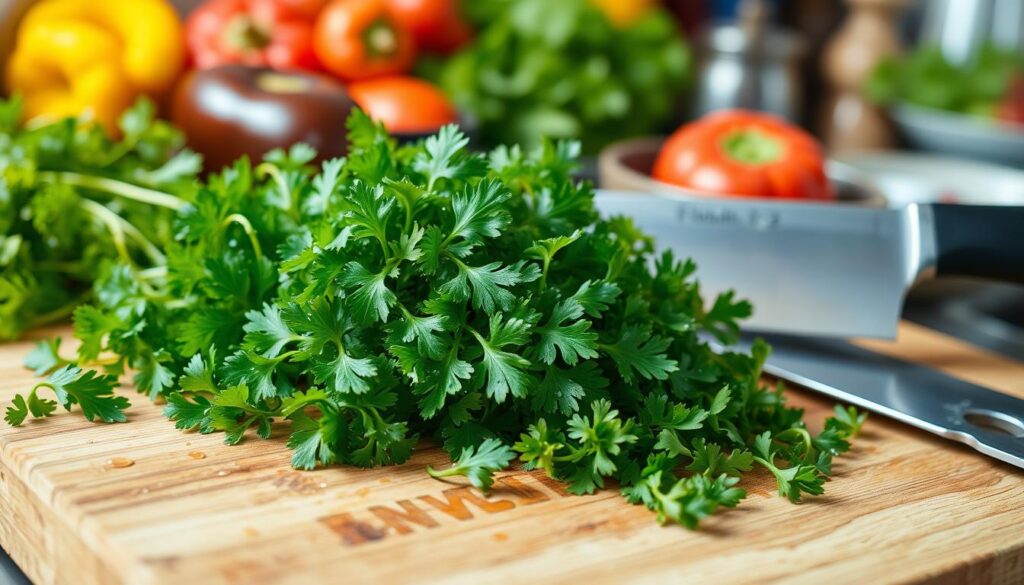
Flavor Pairings
Knowing how curly parsley tastes is key. It goes well with many foods:
- Grilled meats
- Roasted vegetables
- Fish dishes
- Potato-based recipes
Delicious Curly Parsley Recipes
Try these protein-rich dishes with curly parsley:
| Recipe | Protein | Calories |
|---|---|---|
| Lemon-Parsley Baked Cod | 28g | 316 |
| Chimichurri Shrimp | 21g | 316 |
| Lemony Chicken Salad | 24g | 240 |
“Curly parsley isn’t just a garnish—it’s a flavor enhancer that can elevate any dish!” – Culinary Expert
Garnishing with Curly Parsley
Garnishing is where curly parsley really stands out. Its leaves add elegant visual interest to any dish. Sprinkle it on seafood, salads, or roasted veggies for a gourmet look.
Pro tip: Chop curly parsley just before using for the best flavor and look.
Preserving Curly Parsley
The paragraph emphasizes that if you want your curly parsley to stay fresh and flavorful for a long time, it’s important to learn preservation methods. It suggests that there are multiple ways to achieve this and invites the reader to explore these options to keep their parsley in excellent condition all year round.
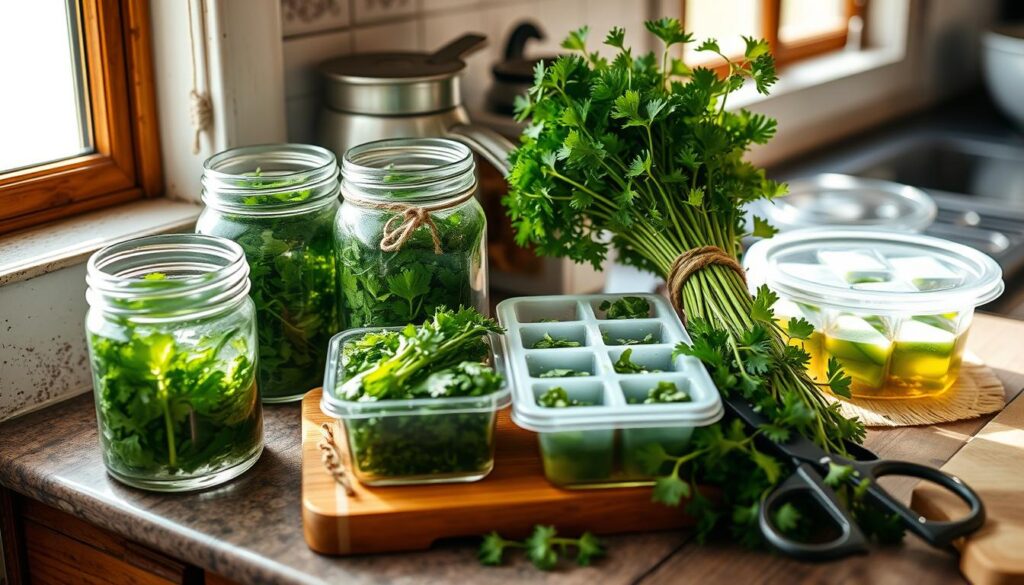
Freezing Curly Parsley
Freezing is a great way to keep curly parsley fresh. First, wash the herbs well and dry them. Then, chop them finely. You can freeze parsley in a few ways:
- Store in freezer bags
- Create parsley ice cubes
- Freeze in olive oil
Drying Curly Parsley
Drying parsley at home is easy and saves money. Oven drying is the fastest and simplest way. Dried parsley can last up to a year, with the best taste in the first 6 months.
There are a few ways to dry parsley:
- Air drying
- Sun drying
- Using a dehydrator
- Oven drying at 170°F
Making Parsley Oil
Making parsley oil is another great way to preserve it. This method keeps the herb’s flavor and aroma. You can use dried parsley in:
- Seasoning blends
- Herb garnishes
- Compound butter
- Bread and dough recipes
“Preserving herbs is an art that connects us to traditional cooking methods and helps reduce food waste.” – Culinary Expert
Learning these preservation methods means you’ll always have fresh curly parsley. It will add vibrant flavor and nutrition to your dishes.
Curly Parsley vs. Flat-Leaf Parsley
Exploring herbs in your kitchen can be exciting. Knowing the difference between curly and flat-leaf parsley can make your cooking better. These herbs may look alike but have unique qualities that can change your dishes.
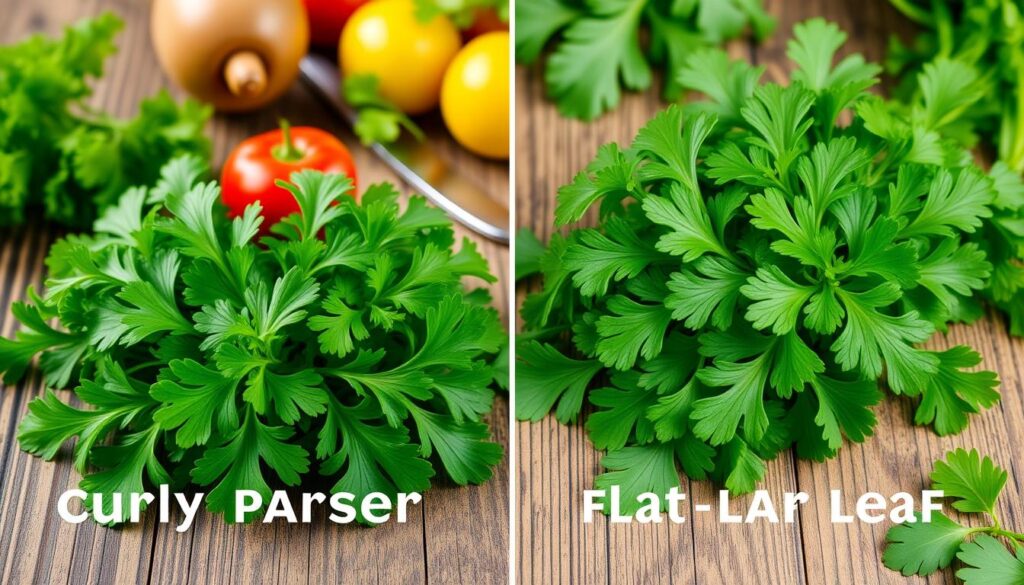
Taste and Flavor Profiles
Flat-leaf parsley has a strong, grassy taste with earthy and peppery notes. On the other hand, curly parsley tastes milder with a lighter, more delicate flavor. This difference in taste affects how you use each type in your recipes.
Culinary Applications
- Flat-leaf parsley: Ideal for intense flavor in Mediterranean and Italian dishes
- Curly-parsley: Perfect for decorative garnishing and subtle herb notes
- Flat-leaf parsley: Better for chopping and mixing into recipes
- Curly-parsley: Excellent for plate decoration
Choosing the Right Parsley Type
Choosing between curly and flat-leaf parsley depends on your cooking goals. For strong herb flavors, choose flat-leaf parsley. For a mild taste with visual appeal, go for curly-parsley.
| Characteristic | Curly-parsley | Flat-Leaf Parsley |
|---|---|---|
| Flavor Intensity | Mild | Strong |
| Primary Use | Garnishing | Cooking |
| Texture | Ruffled, decorative | Smooth, flat |
“The right herb can transform a good dish into an extraordinary culinary experience.”
Understanding the differences between curly and flat-leaf parsley helps you make better choices in cooking.
Curly Parsley as a Decorative Herb
Fresh curly-parsley is more than just a flavor enhancer. It’s a versatile decoration that can change how your dishes and flower arrangements look. Its bright green color and special texture make it a secret tool for both home cooks and professional chefs.

Arranging Curly Parsley in Plates
Make your plates stand out with curly-parsley. It’s not just for garnishing. This herb can make your dishes look amazing:
- Use as a delicate border around the plate’s edge
- Create intricate patterns beneath main dishes
- Sprinkle strategically to add texture and color
Professional chefs love using fresh curly-parsley for its looks. The herb’s curly leaves add a natural, elegant touch that makes any dish better.
Using Curly Parsley in Floral Arrangements
Curly-parsley is also great in flower arrangements. Its tight, curly leaves add a unique texture that goes well with flowers:
- Add volume to mixed bouquets
- Create interesting green accents
- Provide a delicate, lacy background
“Curly-parsley transforms ordinary arrangements into extraordinary botanical compositions.”
Whether you’re making a fancy meal or a centerpiece, curly-parsley adds a charming touch.
Pest Management for Curly Parsley
Protecting your curly-parsley from pests is key to a healthy herb garden. Knowing how to manage pests is part of successful curly-parsley care.
Common Pests Threatening Curly Parsley
Several insects can harm your parsley plants. Here are the main pests to watch out for:
- Aphids cluster on stems and leaf undersides, draining plant sap
- Spider Mites create yellow speckles on leaves
- Whiteflies that flutter up when disturbed
- Mealybugs appearing as white cottony masses

Organic Pest Control Methods
You don’t need harsh chemicals to protect your curly-parsley. Organic methods can keep pests under control:
- Introduce beneficial insects like ladybugs to control aphids
- Use insecticidal soap to suffocate harmful insects
- Create homemade miticides using cinnamon, garlic, and dish soap
- Apply isopropyl alcohol to eliminate mealybugs
“Prevention is better than cure” – This adage perfectly describes pest management in herb gardening.
By following these tips, you can keep your plants safe and your herb garden healthy and thriving.
Curly Parsley in Traditional Medicine
Curly-parsley has a long history in traditional medicine. It’s not just for cooking. This herb has many benefits that have been known for centuries.
Historical Healing Practices
In ancient times, curly-parsley was seen as a powerful remedy. People used its roots and leaves to help with many health problems. It was used for:
- Supporting digestive health
- Acting as a natural diuretic
- Promoting kidney function
- Helping with menstrual issues
Modern Herbal Applications
Today, curly-parsley is still valued for its health benefits. Scientific research has confirmed many of its traditional uses. It’s packed with nutrients that support health:
- Boosting immune system function
- Supporting cardiovascular health
- Providing antioxidant protection
Nature’s pharmacy often hides in plain sight, with herbs like curly-parsley offering remarkable healing potential.
While these uses are interesting, it’s important to talk to a doctor before using parsley for health reasons. Everyone’s health is different. A doctor can help make sure you use it safely and effectively.
Fun Facts About Curly Parsley
Curly-parsley has a long and interesting history. It was loved by ancient civilizations for more than just food. The Greeks and Romans used it in cooking and for health reasons. Its name comes from the Greek “petroselinon,” meaning “rock celery”.
In many parts of the world, curly-parsley is a key ingredient. It’s used in European, Middle Eastern, and American cooking. Chefs love it for adding a fresh look to dishes. Plus, it helps get rid of garlic smells in cooking.
Curly-parsleyis more than just a kitchen item. In ancient times, it had deep symbolic meanings. It was used in funerals and also in spring festivals to symbolize new life. As a two-year plant, it’s a hardy addition to gardens everywhere.
Cultural Significance
From the Mediterranean to kitchens worldwide, curly-parsley is a treasured herb. Its history shows how adaptable and loved this herb is.
Curly Parsley in Popular Cuisine
Curly parsley is a favorite in kitchens everywhere. It’s used to add flavor and looks to dishes. Its health benefits and versatility keep it popular in many cuisines.




